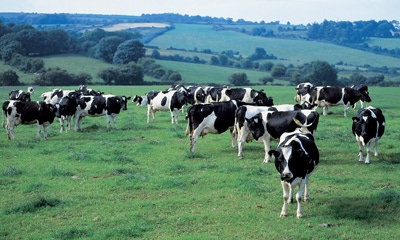November 2, 2016

Butter sales have been a bright spot for the dairy industry and have been very good this year, according to Bob Cropp, University of Wisconsin-Extension dairy economist. The price of butter averaged over $2 per pound in January and February, $1.96 in March, and again above $2 per pound for April through August.
Prices started to weaken at the end of August and fell below $2 per pound on Sept. 19. Prices continued to decline in October, with butter dropping to $1.75 per pound by the end of the month.

“Normally, butter prices peak in October as we move closer to peak sales during November and December,” Cropp says. “But growing butter stocks, weaker exports and more imports have pushed prices down.”
Butter stocks on Aug. 31 were 51.9% higher than a year ago and 58.6% higher than the five-year average for this date. January-to-August butter exports were 12% lower than a year ago and 75.2% lower than 2014. August butter exports were 59% lower than a year ago. Coupled with higher imports, the net trade deficit for butter was the highest since December 2006.
Milk production continues to run above year-ago levels. USDA shows U.S. milk production for the month of September up 2.1% from a year ago. The number of milk cows was just 0.2% higher than a year ago, but the increase in milk per cow was 1.8% higher. While milk cows increased June through August, the number of cows declined by 3,000 head in September, but was up 28,000 since January.
Despite relatively strong milk production, cheese prices rallied in August, pushing up the August Class III price. On the CME, 40-pound cheddar blocks and barrels were at a low of $1.275 per pound and $1.28 per pound, respectively, in May. In August, 40-pound blocks peaked at $1.87 and barrels at $1.88. The Class III price was at a low of $12.76 in May. The August Class III price had increased to $16.91. This increase was short-lived, with the September Class III at $16.39 and forecasts for October through December in the low $15s.
While domestic cheese sales continue strong, the increase in milk production and weak exports has increased cheese stock levels, putting downward pressure on prices. Aug. 31 American cheese stocks were 5% higher than a year ago and 12.0% higher than the five-year average for this date. August cheese exports increased slightly from a year ago, but were 17% below a year ago January through August and 28.9% lower than 2014 during this period. By Oct. 11, 40-pound blocks had fallen to $1.52 per pound and barrels on Oct. 13 to $1.44 per pound.
In October, U.S. Secretary of Agriculture Tom Vilsack announced that the USDA will purchase $20 million of cheddar cheese to reduce cheese inventories while assisting food banks. Cheese deliveries to food banks are expected to begin in March. This was the second time in less than two months that Vilsack announced plans to purchase cheese. Vilsack’s announcements are expected to increase demand for milk, according to Jim Mulhern, president and CEO of the National Milk Producers Federation.
USDA and other price forecasters have milk prices improving as we move through 2017, but with differences as to how quickly and how much of an improvement. The level of milk production and exports will be key factors. USDA forecasts milk production to increase 2.2% in 2017, from 0.5% more cows and 1.7% more milk per cow.
“This is a lot of milk and will dampen the price increase,” Cropp says. “But milk production could well be lower. Milk per cow is expected to average 1.6% higher this year, which is higher than the recent average annual increases. So another 1.7% increase for 2017 appears to be on the higher side.
“As of now, it looks like the Class III price will be in the $15s at least for the first quarter of 2017, with continued increases there after reaching the $16s by perhaps the end of the second quarter and the high $16s possible by the end of the third quarter and the fourth quarter,” he says. “However, my forecast is higher than USDA’s and current Class III futures. Prices are very sensitive to rather small changes, so no doubt forecasts will be revised.”
O’Leary is editor of our sister publication Wisconsin Agriculturist.
You May Also Like




